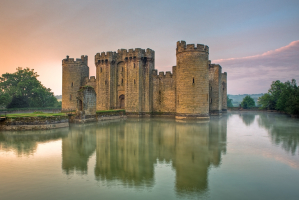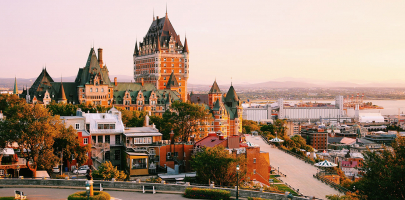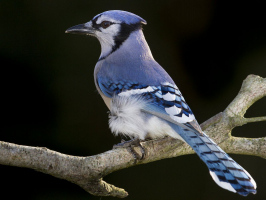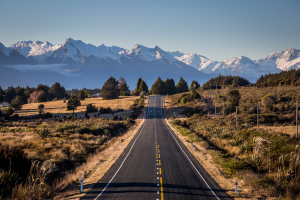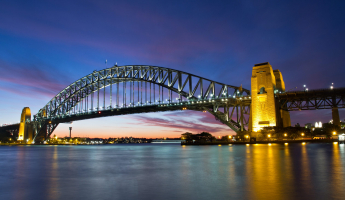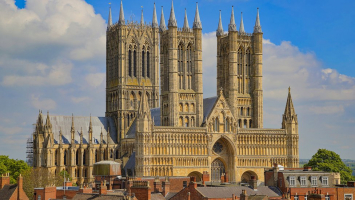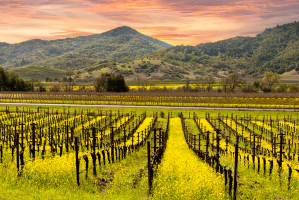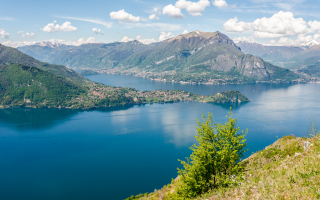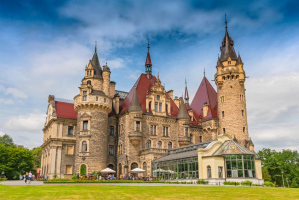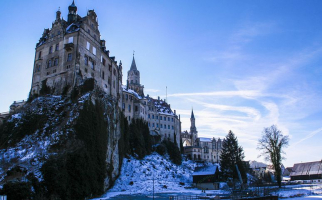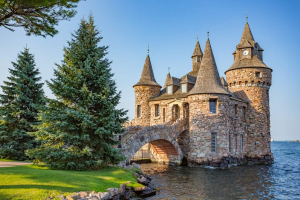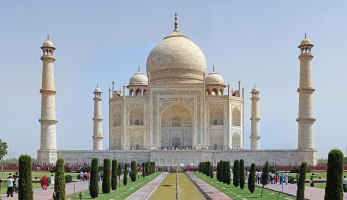Top 13 Most Beautiful Castles in The World
Childhood is associated with stories of princes and princesses. The setting where those stories take place is magnificent and magnificent castles. Actually, ... read more...there are many castles in the world associated with nobility. Let's find out with Toplist the most beautiful castles in the world!
-
The first position on the list of the most beautiful castles in the world is Krak des Chevaliers. Krak des Chevaliers, also known as Hisn al-Akrad in Arabic, is a fortress in Syria that was constructed for the Emir of Aleppo in 1031 AD. During the 12th and 13th centuries, it served as the headquarters of the renowned Crusader Knights Hospitalier. Krak des Chevaliers is a breathtaking example of medieval military architecture and is arguably the best maintained Crusader fortress still standing today. As a result, it was named a World Heritage site in 2006.
The castle, which is situated atop a 650-meter-high natural citadel halfway between Tartus and Tripoli, was first built in 1031 on the site of an older fort by the Emir of Aleppo. However, Raymond II of Tripoli granted the fortress to the Jerusalem-based Order of the Knights Hospitaller in 1144 after the Emir was vanquished.
The well-preserved castle is now surrounded by the al-Husn town, which welcomes visitors. Krak des Chevaliers offers a particularly complete picture of Crusader life to people interested in the Crusades because of its location close to the Lebanon border. Free of charge, explore the enormous castle while the wind buffets you high on the hill.
Be warned that given the recent civil war, you should check your government's travel recommendations before visiting Syria. Bullet holes and Russian graffiti left on the medieval fortress by Chechen rebels are now part of the castle's ruins as a reminder of the most recent conflict.
Location: At Tallah, Homs, Syria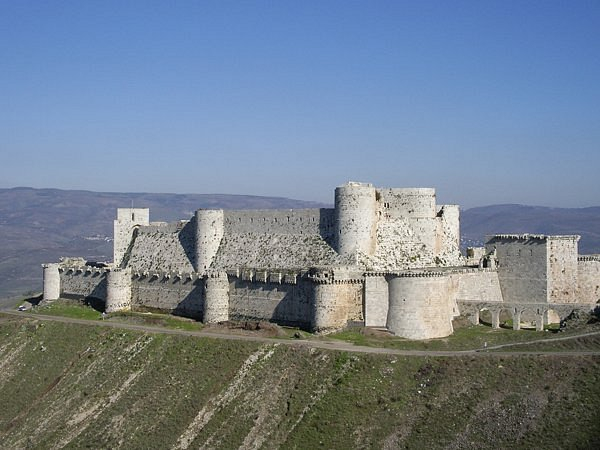
Photo: tripadvisor.com.vn 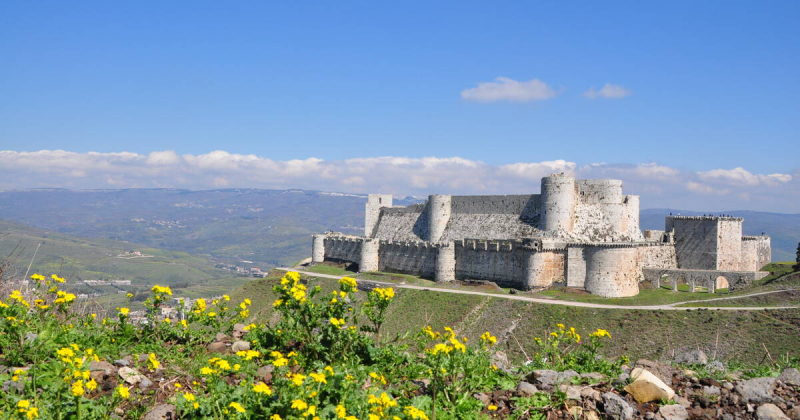
Photo: whc.unesco.org -
Coburg Castle, the ancient residence of the Dukes of Saxe-Coburg-Gotha, is one of Germany's largest and most beautiful remaining medieval fortress complexes. It is located close to the Itz River, some 100 kilometers north of Nuremberg. The self-styled "Fränkische Krone," or Franconian Crown, dominates the town of Coburg in Upper Franconia and was first identified as "Koburk" in a record from 1056. It is a gorgeous castle and the location of one of the most significant collections of art and cultural history in Germany.
The Heated Stone Chamber (Steinerne Kemenate), the Memorial Room, the 19th-century Lutherkapelle, and the Bear Enclosures are some of the highlights of today's trips to the castle, which showcase centuries worth of architecture and painstaking restoration. There are works by the famous 15th and 16th century sculptor and woodcarver Tilman Riemenschneider, as well as pieces by the old German masters Cranach, Dürer, Grünewald, and Holbein. There are also stunning collections of Venetian glassware, hunting weapons, carriages and sleighs (including Europe's oldest operating stagecoach), carriages and sleighs, and copper engravings.
From April to September, the castle is open every day (closed on Mondays), and from October to March, it is only open in the afternoons (closed on Mondays). You want Veste Coburg; if you want to make a day of it, the same organization also runs the neighboring European Museum of Modern Glass.Location: Lobelstein, Bavaria, Germany
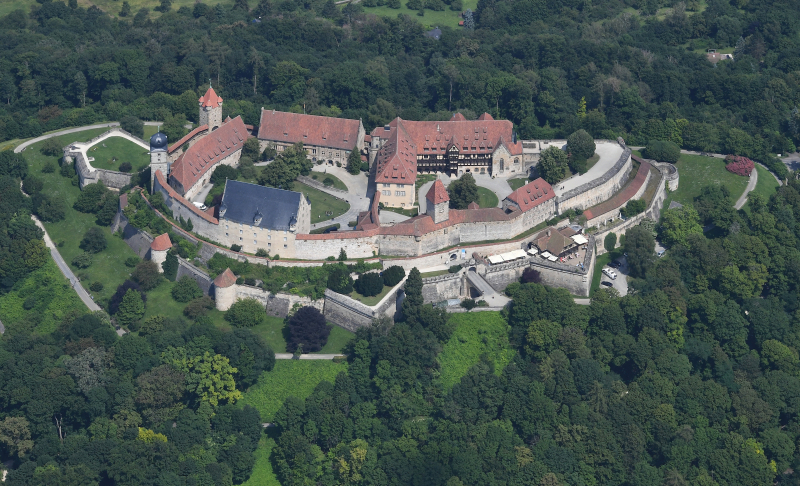
Photo: wikipedia 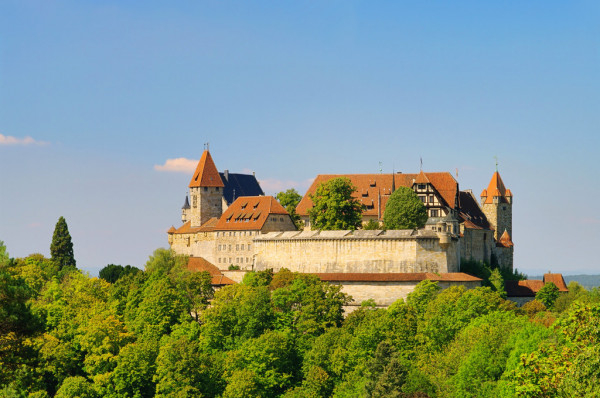
Photo: depositphotos.com -
The magnificent Schwerin Castle (Schweriner Schloss) appears to float on Schwerin Lake. Although it's possible that a fort existed on this site as early as the ninth century, Schwerin Fortress's earliest records date to Henry the Lion (Henry IIIconstruction )'s castle there in 1160.
On the castle island, where Schwerin Castle today sits, there have previously been a number of ancient fortifications. Archaeologists are certain that there have been people living in the area for thousands of years, although the earliest traces date back to 942.
The famed Henry the Lion, Duke of Bavaria, and Saxony, Heinrich der Löwe, led an army of warriors that captured the Obotrit tribe's castle in 1160. Thus, Schwerin's official establishment year was 1160. The municipal administration now has its offices at Schwerin Castle, which also houses an art gallery with works from antiquity to the modern century. The seventeenth-century Dutch and Flemish paintings in Schwerin's museum are among its most significant items. Schwerin Castle is one of the most beautiful castles in the world.
Location: Lennéstraße 1, 19053 Schwerin, Germany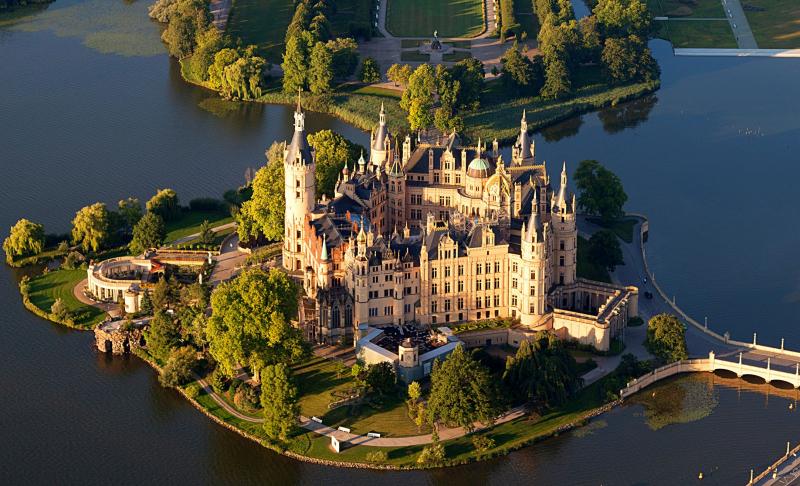
Photo: wikipedia 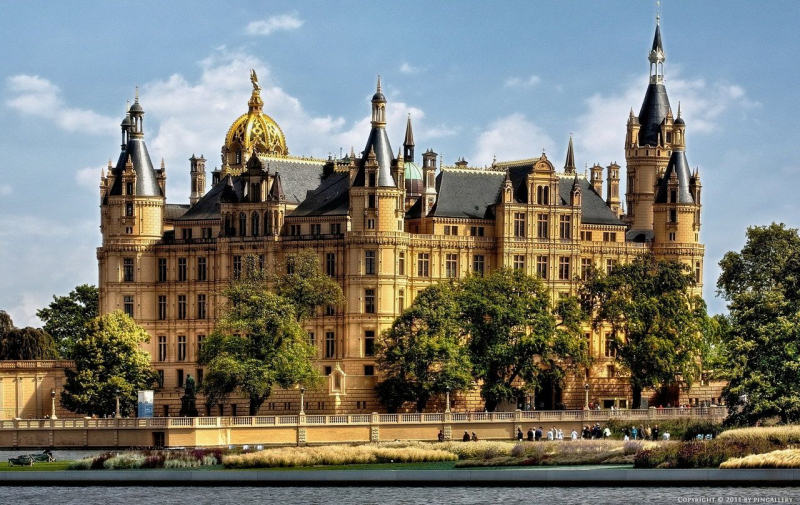
Photo: pinterest.com -
In Bojnice, Slovakia, there is a medieval castle called Bojnice Castle. It is a 12th-century Romanesque fortress with some authentic Gothic and Renaissance features. Bojnice Castle is one of Slovakia's most prominent tourist attractions, drawing tens of thousands of tourists each year in addition to serving as a favorite location for fantasy and fairy tale films. A castle is first recorded on the site in 1113
The International Festival of Ghosts and Spirits, the Summer Music Festival, and the well-liked Castle Fairytale are just a few of the castle's well-known attractions. The charming castle is frequently used as a backdrop for fairy tale films like Fantaghir. About 200,000 people visited the castle in 2006. It is home to Slovakia's most well-known museum and has appeared in numerous motion pictures.
Since 1950, the Bojnice Castle has been a component of the Slovak National Museum. Furniture from the early modern era and the late 19th century is included in the interiors. Count Jan Palfi is interred in a chapel carved out of the castle's rock below, and the chapel has a Florentine altar from the fourteenth century.
The water supply for the castle is located in a cave that is underneath the courtyard. Bojnice Castle's grounds feature a moat with swans and a 600-year-old tree. The castle also provides night tours in addition to the typical daylight tour. The International Festival of Ghosts and Spirits takes place there in late April or early May.
Location: Zámok a okolie 1, 972 01 Bojnice, Slovakia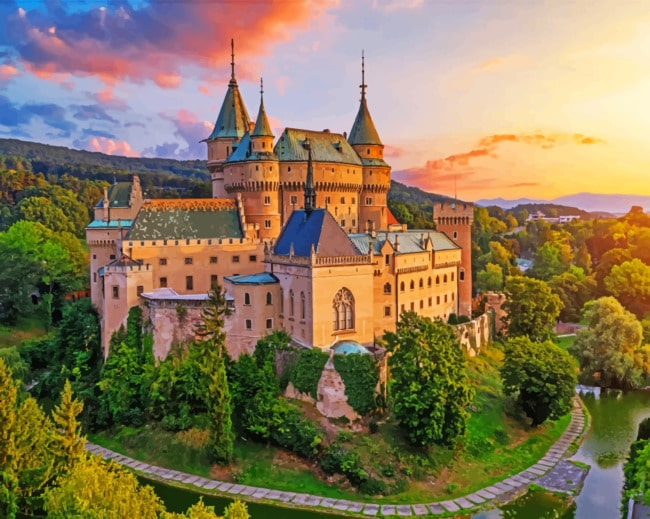
Photo: diamondbynumbers.com Video: https://www.youtube.com/watch?v=wDsxiR-iGu0 -
Castile and León, Spain's city of Segovia is home to the Alcázar of Segovia, a medieval castle. It is one of the most recognizable castle palaces in Spain because of its design, which resembles the bow of a ship. It rises out on a rocky crag above the confluence of two rivers close to the Guadarrama mountains. The Almoravid dynasty initially constructed the alcázar in the 11th or 12th century as a stronghold, but it has subsequently been used as a royal palace where twenty-two kings have reigned, a state jail, a Royal Artillery College, and a military academy. The castle is a representation of Segovia's Old City and looks out over a valley where the Eresma River flows.
In 1985, UNESCO designated it as a World Heritage Site. Since its designation as a National Archive by Royal Decree in 1998, the alcazar is now a museum and a structure housing the military archives. Highlights of the Alcazar of Segovia's interior include the magnificent keep, the square with four towers, the hall with twin windows and pointed barrel vaults, and the ornate Mudejar-style interior.
The spectacular site is open for tours, and visitors can climb the towers for a beautiful view of the town. The magnificent castle is on our list of the greatest tourist attractions in Spain.Established: 11th or 12th century
Location: Pl. Reina Victoria Eugenia, s/n, 40003 Segovia, Spain
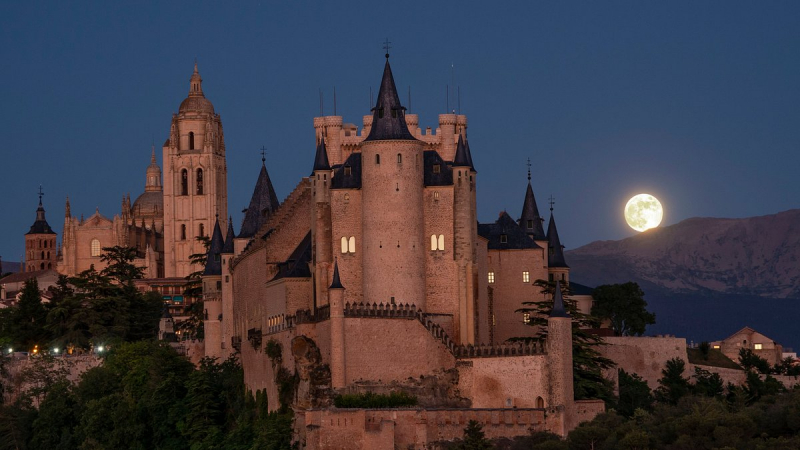
Photo: tripadvisor.com.vn 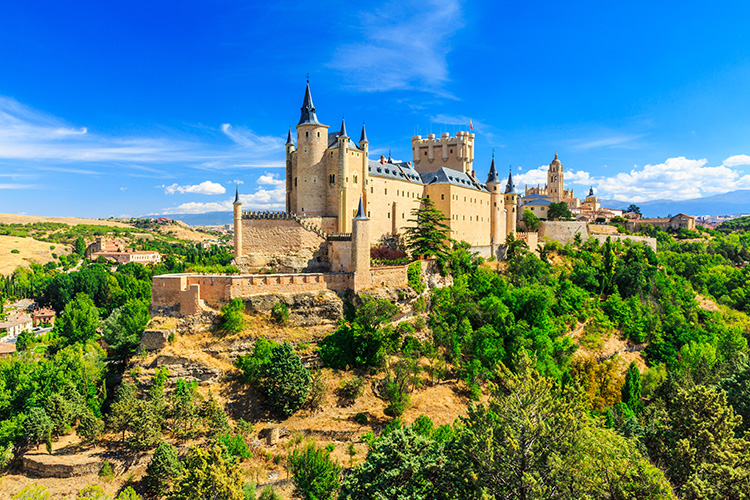
Photo: historyhit.com -
One of the most beautiful castles in the world is Mont Saint-Michel. French Normandy's Mont Saint-Michel, an outstanding ancient hamlet perched on a little rocky island, commands the skyline. The Benedictine Abbey and Parish Church of Mont Saint-Michel, which is connected to the coast by a causeway, are its most famous features. The Romanesque Abbey of Mont Saint-Michel was built and enlarged numerous times between the 11th and the 16th centuries, eventually becoming the majestic building that is seen today.
During the Hundred Years' War, the English attempted to take Mont Saint-Michel but were unsuccessful. Later, during the French Revolution, the location served as a jail. UNESCO designated Mont Saint-Michel as a World Heritage Site in 1979.
Visitors throng Mont Saint-Michel nowadays to see the magnificent Abbey and Church and to wander around the historic alleyways. However, the ascent to Abbey requires some effort. Numerous additional locations are still in existence, such as the 14th-century Tiphaine's house, the Mont Saint-Michel Museum of History, the medieval ramparts, and a maritime museum. Next to the site's entrance is a tourist information center. For an extra fee, guided tours and audio guides are offered at Mont Saint-Michel.
Location: Normandie, France
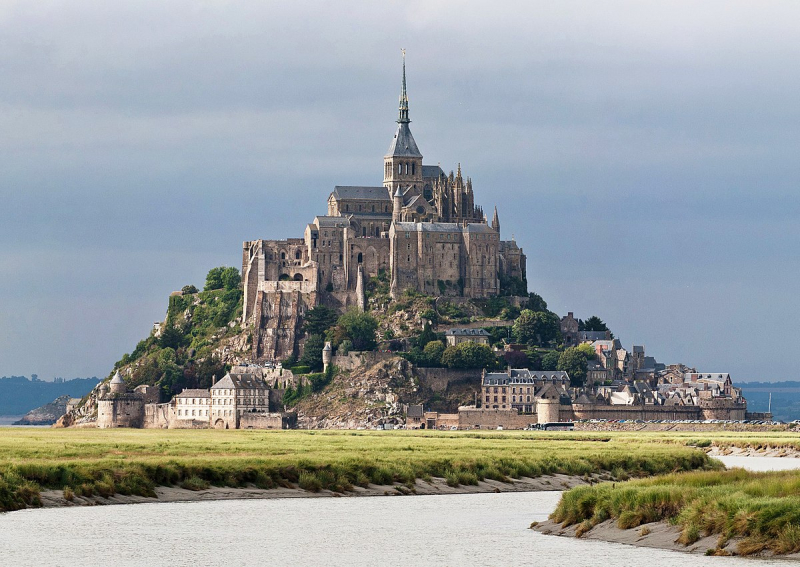
Photo: wikipedia 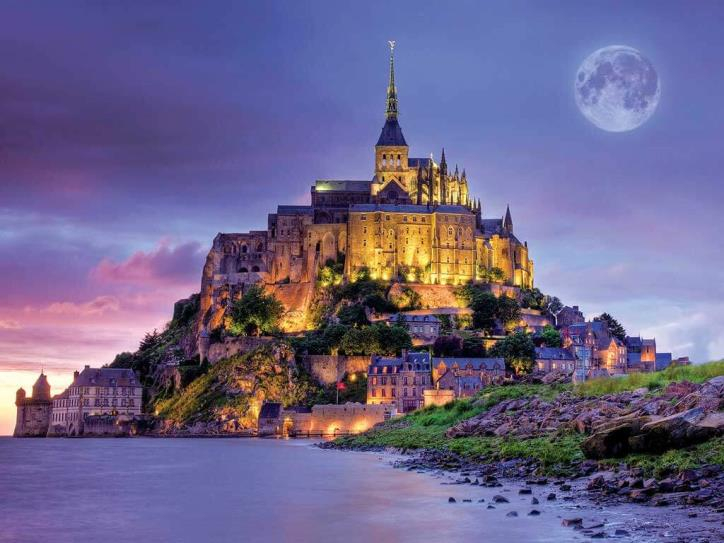
Photo: bnews.vn -
In the southern Italian area of Murgia, close to the Adriatic Sea, the castle-like structure of Castel del Monte sits on a rocky hill dominating the surrounding countryside. It is situated in the municipality of Andria. It was finished around 1240, making it a distinctive example of medieval architecture. The location of the castle, its flawless octagonal shape, and the mathematical and astronomical accuracy of its design are all reflections of Emperor Frederick II's extensive education and cultural vision.
The Germanic Emperor, a pioneer of modern humanism, combined Eastern and Western traditions by gathering experts from all around the Mediterranean at his court. The octagonal plan of the castle, with octagonal towers at each angle, is a distinctive feature that symbolizes the pursuit of perfection. Interior design elements exhibit Eastern influences, such as the cutting-edge hydraulic system Frederick II employed for bathing in accordance with traditional Arabic norms.
The two floors of Castel del Monte can be explored by guests. Even if remnants of the former splendor, such the marble walls, have mostly vanished, the inside is still comparatively sparse. The majority of the information boards are in Italian. Allow an hour for your visit to the castle, which is open every day but sees only a small number of people.
Location: Contrada Castel del Monte Ex, Strada Statale 170, 76123 Andria BT, Italy
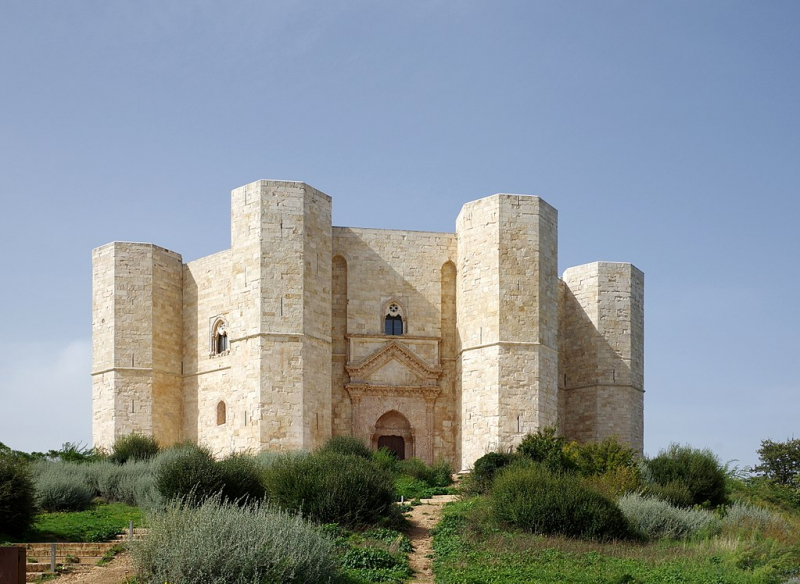
Photo: wikipedia.org 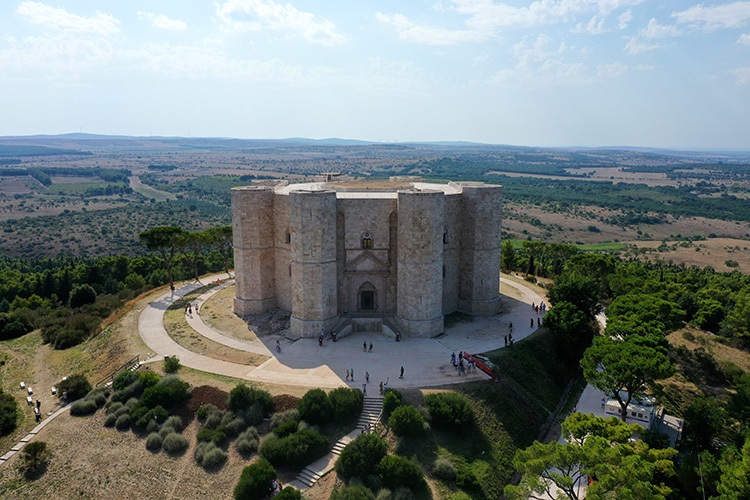
Photo: historyhit.com -
East Sussex, England's Bodiam Castle is a moated castle from the 14th century that lies close to Robertsbridge. With the approval of Richard II, it was constructed in 1385 by Sir Edward Dalyngrigge, a former knight of Edward III, ostensibly to protect the region against French invasion during the Hundred Years' War. Bodiam Castle has a quadrangular layout and no keep; instead, its numerous chambers are placed around the outside defensive walls and inner courts. Towers with crenellations on top identify its corners and entrance.
The National Trust, which currently oversees Bodiam Castle, allows tourists to explore both its impressive exterior walls and spectacular ruined interior. Visitors enter the castle by its large gatehouse, which features an ancient portcullis and the carved coat of arms of the castle's founder. The castle is still surrounded by an impressive moat.
The Postern Tower and medieval Chapel offer a glimpse into the structure's illustrious history; the big windows and intricate brickwork are evidence of the location's former richness and prominence. As you explore nearly 700 years of British history, informative information boards lead you through the stunning ruins at Bodiam, and recreations of how it once might have appeared to bring its tale to life.
Location: East Sussex, England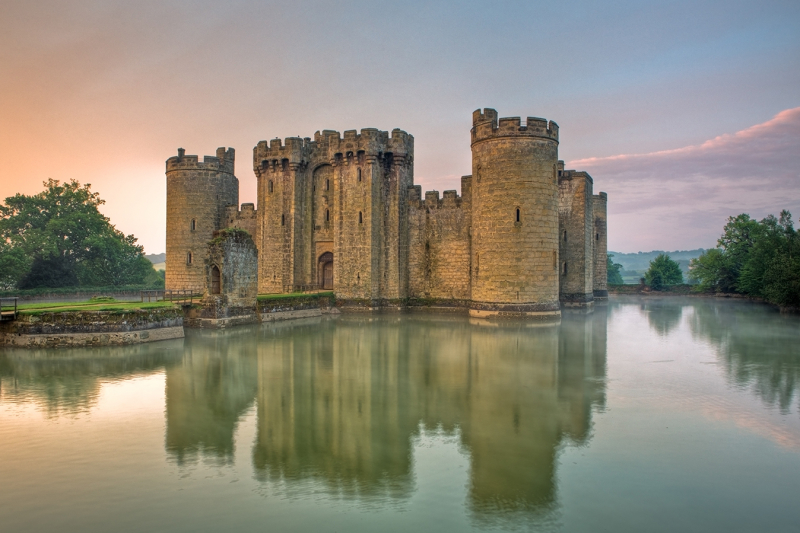
Photo: wikipedia 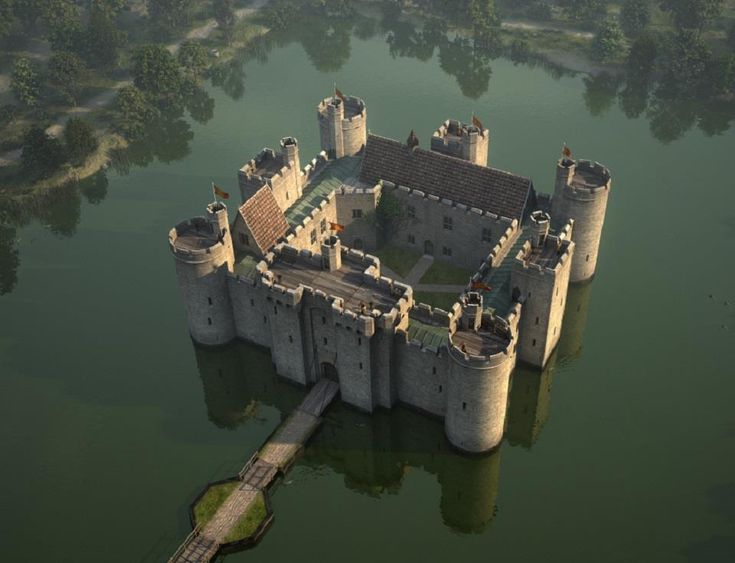
Photo: pinterest.com -
Gyantse Dzong castle which can be seen now was built around 1390 to protect the southern entrances to the Tsangpo Valley and Lhasa. The anti-Buddhist monarch Langdharma's son Pelkhor-tsen, who most likely ruled from 838 to 841 CE, is credited with building the initial castle, which is known as Gyel-khar-tse. According to legend, the current fortifications were constructed around 1268, following the Sakyapa sect's ascension to dominance.
Phakpa Pelzangpo (1318–1370), a local ruler who gained favor by supporting the Sakyapas in the south, erected a sizable palace in 1365. Additionally, he invited Buton Rinchendrub of Zhalu, a well-known Buddhist instructor, to reside in a nearby temple.
As it always did, the castle has been steadily renovated and "still dominates the town and adjacent plains." There is currently a modest museum there that describes the Younghusband expedition's excesses from the Chinese viewpoint. During the Cultural Revolution in China in 1967, the walls were once more demolished with dynamite, although not much more seems to have been documented about this chaotic time. The dzong, however, has steadily undergone restoration and "still rules the town and the plains beyond as it always did." There is currently a modest museum there that describes the Younghusband expedition's excesses from the Chinese viewpoint.
Location: Gyantse, Gyantse County, Shigatse, China
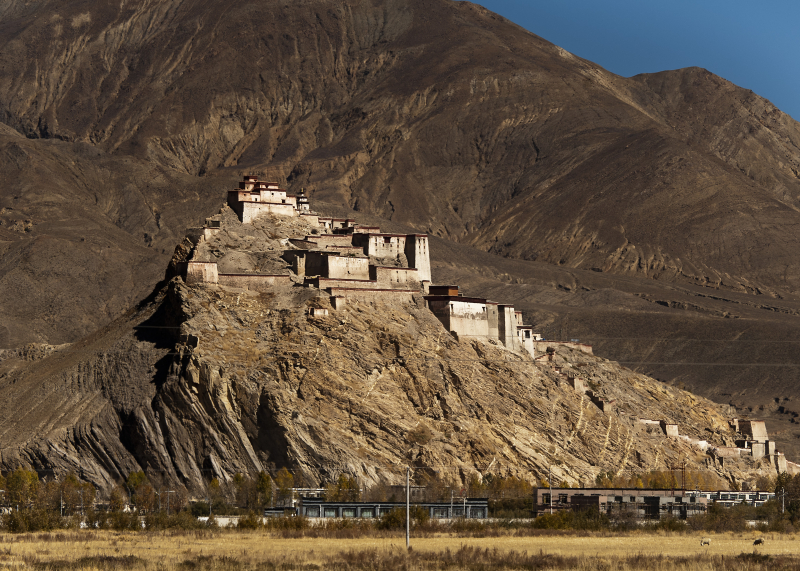
Photo: wikipedia 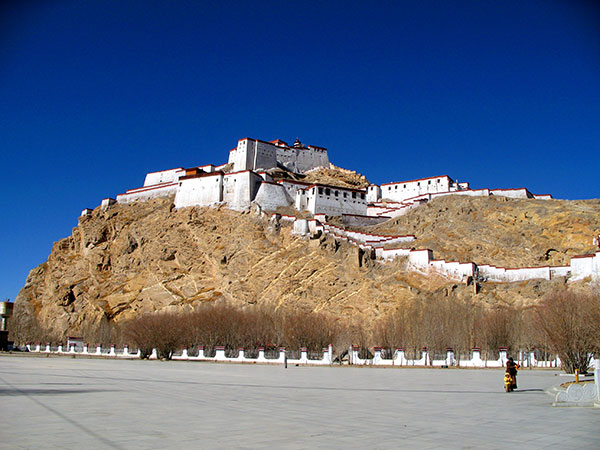
Photo: topchinatravel.com -
Himeji, a remarkable castle from the 17th century in Japan, is renowned for being one of the most exquisite and well-preserved examples of its sort in the nation. The site first saw the construction of a fortification in some form in the 14th century, but the primary structure that is still standing today in Himeji dates to 1609. Due to its dazzling white facade, Himeji is also known as Shirasagi-j ('White Heron Castle'), and it was named one of Japan's National Treasures and a World Heritage Site by UNESCO in 1993. In 1869, the state acquired control of the castle.
Although the castle was never attacked or destroyed, the main portion of Himeji, which is made of wood, has remained extremely durable over the years despite being heavily bombarded during World War Two. But over the years, Himeji has undergone several repairs and modifications.
Himeji is currently one of the most visited castles in Japan and is open all year. Visitors can visit the castle's highest point for stunning vistas of the entire city of Himeji. Himeji is also well-known in the spring, during Japan's cherry blossom season (mid-April is considered the peak) when the many cherry blossom trees surrounding the castle grounds are in full bloom and make for an incredibly picturesque backdrop.
Location: 68 Honmachi, Himeji, Hyogo 670-0012, Japan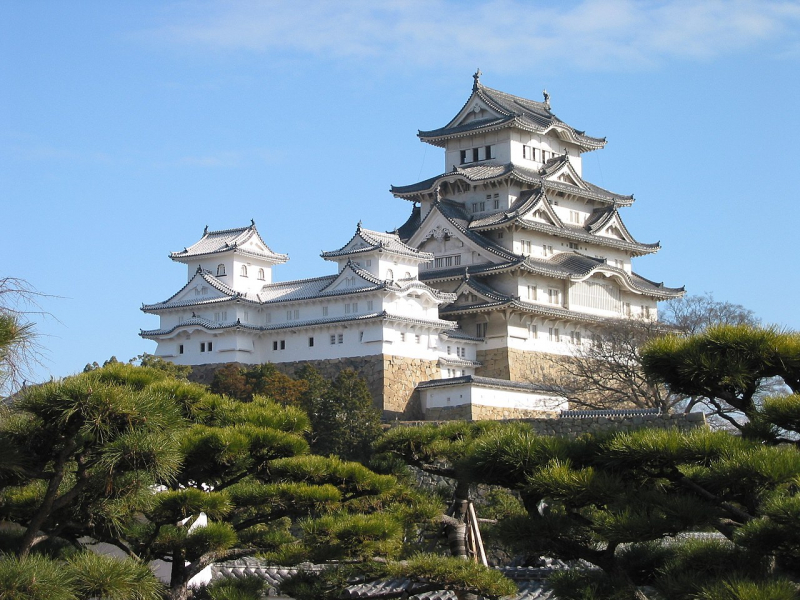
Photo: wikipedia 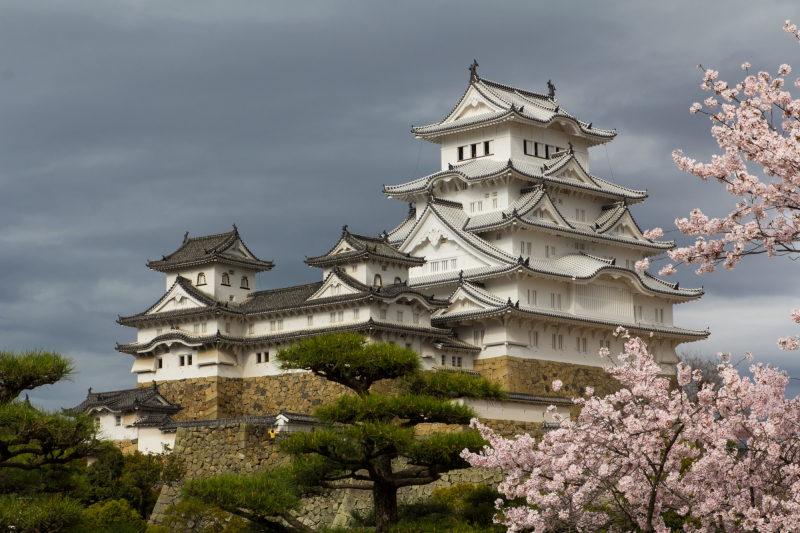
Photo: archdaily.com -
Queen Elizabeth II is the owner of the sizable estate residence known as Balmoral Castle in Aberdeenshire, Scotland. It is located close to Crathie, 50 miles west of Aberdeen and 9 miles west of Ballater. the Balmoral Castle we see today was built between 1853 and 1856.
Since 1852, when Prince Albert, the husband of Queen Victoria, purchased the estate and old castle from the Farquharson family, Balmoral has been one of the official residences of the British royal family. Soon after, it was determined that the home was inadequate, and construction of the modern Balmoral Castle began. Prince Albert modified the ideas of Aberdeen-based architect William Smith. Balmoral is not a part of the Crown Estate and is still the Queen's private property.
Many of the British Royal family's private chambers are not open to the public because Balmoral Castle is still their private home. However, the portion of Balmoral is accessible to guests from April to July.
The Castle Ballroom, a spectacular chamber decorated with portraits, silver statues, and Minton china, is the site's focal point. It still serves as the location for annual dances attended by the Royals. A number of displays, including the Estate exhibition and the wildlife show in the Carriage Hall Courtyard, are also on display. Audio guides are provided that explain the operations of the estate and its history.Location: Balmoral Estates, Ballater AB35 5TB, Scotland
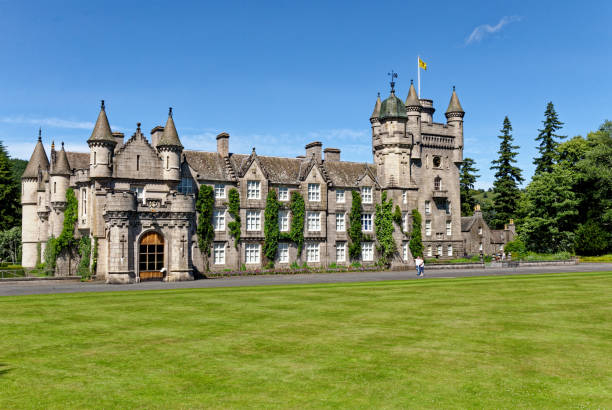
Photo: istockphoto.com 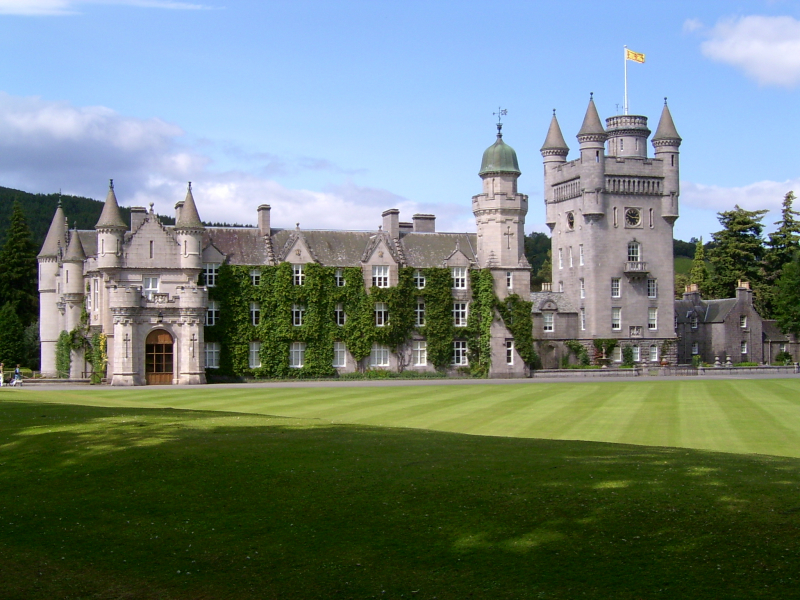
Photo: wikipedia -
Southwest Bavaria in Germany's Füssen district is home to the historicist Neuschwanstein Castle, a 19th-century building perched atop a rocky slope above the settlement of Hohenschwangau. King Ludwig II of Bavaria commissioned the mansion as a getaway and a tribute to Richard Wagner. Ludwig decided against using Bavarian public monies to build the palace and instead used his own fortune and a significant amount of borrowing. Although it started in 1869, construction was never finished.
Neuschwanstein, which was finished in 1886, was motivated by Ludwig II's stated wish to live somewhere created "in the genuine style of the old German knights." The King was supposed to use the castle as his personal abode until his death in 1886. Soon after his passing, it became accessible to the general public. Since then, Neuschwanstein Castle has welcomed more than 61 million visitors. Annual visitor numbers exceed 1.3 million, peaking at 6,000 per day in the summer.
Book in advance, particularly in the summer when Neuschwanstein can receive up to 6000 visitors per day, as guided tours are often offered in both English and German (now the only way to explore the castle). You must purchase your ticket either online or directly from Hohenschwangau. A little documentary on the castle and its builder serves as a nice summary as the tour comes to a close.
The castle is still open all year even though restoration work won't be finished until 2023. In the winter, hours are a little bit reduced. There are various gift shops and a reasonably priced cafe on the property.Location: Neuschwansteinstraße 20, 87645 Schwangau, Germany
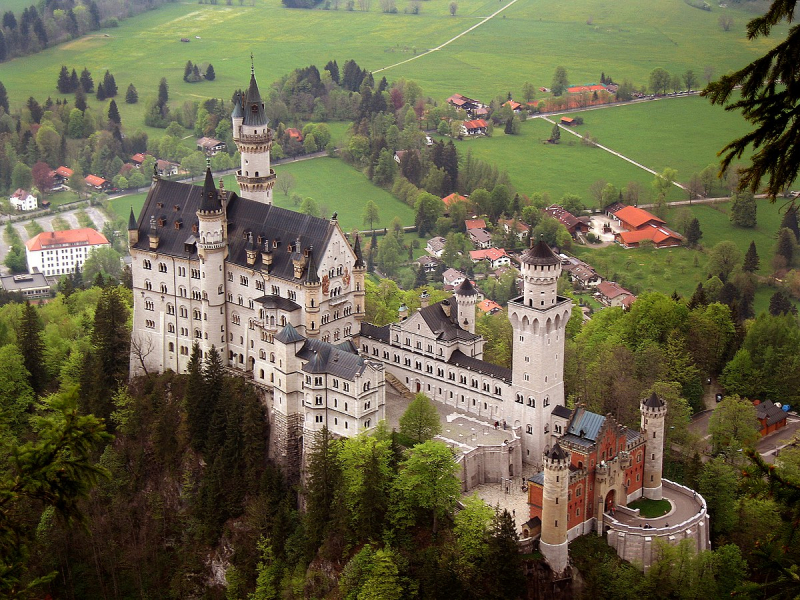
Photo: wikipedia 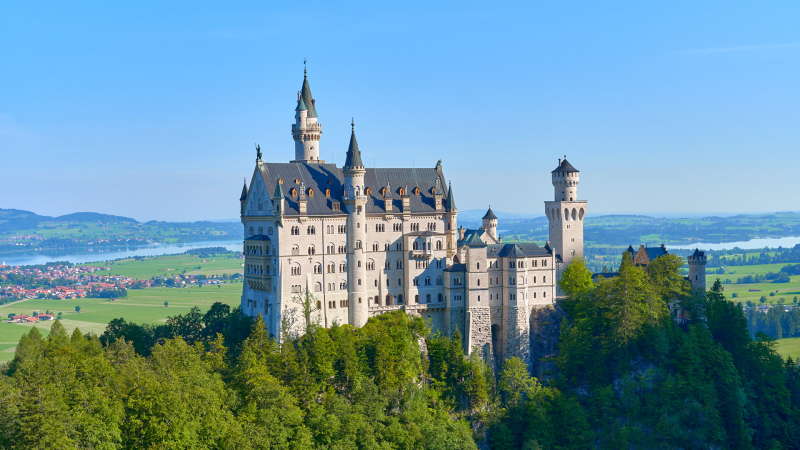
Photo: toptravelsights.com -
The first position on the list of the most beautiful castles in the world is Leeds Castle. Leeds Castle in Kent is a 19th century castle with roots that go back approximately 1,000 years.
Over the years, Leeds Castle changed royal ownership multiple times and hosted a variety of notable visitors, including Henry VIII, who went there several times. The castle was also significantly rebuilt by Henry VIII so that his first wife, Catherine of Aragon, could live there. Leeds Castle, which eventually passed into private hands under King Edward VI, was held by Parliamentarians during the English Civil War and afterward used as a jail for Dutch and French POWs.
Leeds Castle is now a popular vacation spot with a maze, a golf course, and perhaps the world's only museum dedicated to dog collars. Despite the fact that the majority of Leeds Castle's current structure dates from the 19th century renovation, the site's stunning setting and fascinating history entice visitors to explore it. Guided and audio tours are offered for groups and schools. A variety of ancient furniture, artwork, and even the doublet worn by Parliamentarian General Fairfax at the Battle of Maidstone in 1648 is on exhibit throughout the castle.
Location: Maidstone, England, United Kingdom
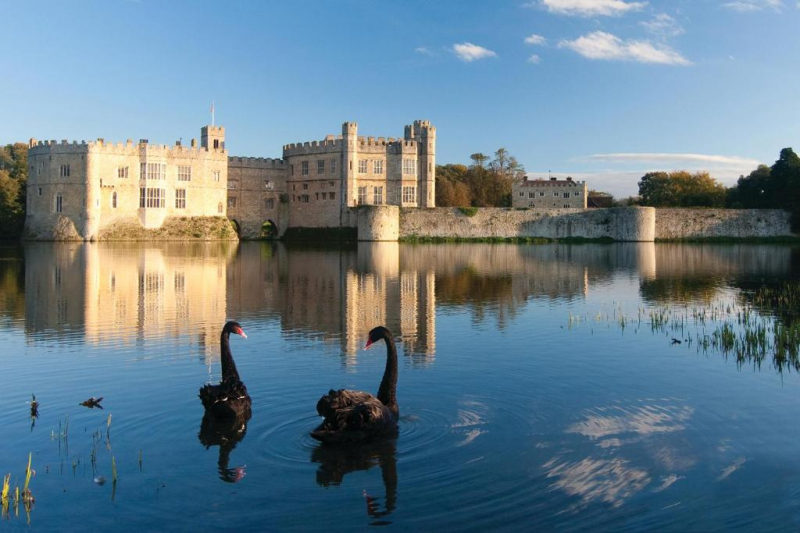
Photo: planetofhotels.com 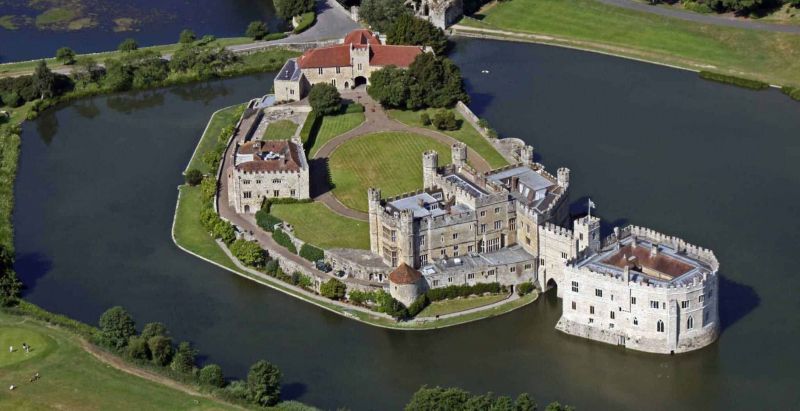
Photo: historic-co.uk















